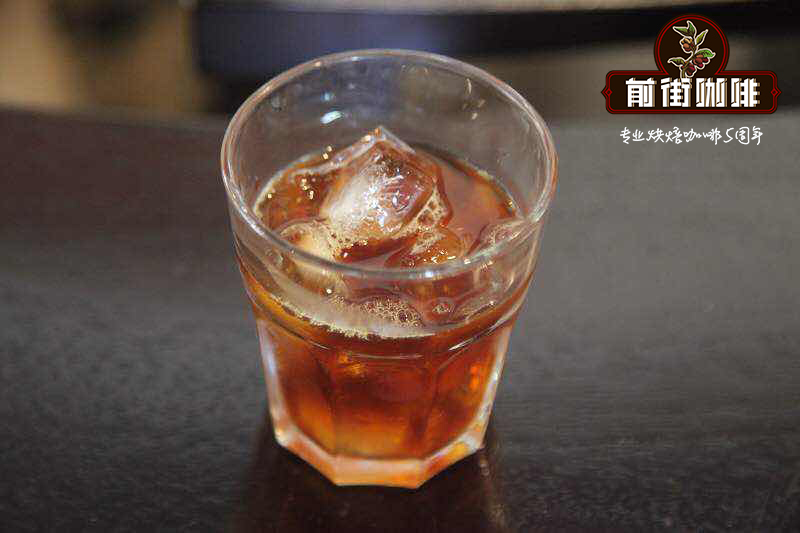Ethiopian Yega Sheffield Coffee is Yega Sheffield Coffee good? Yega Sheffield Coffee Flavor

Professional coffee knowledge exchange more coffee bean information please follow the coffee workshop (Wechat official account cafe_style)
Famous for its sweet taste and aroma, the wine is light and medium-bodied. Ethiopian Yirgacheffes is a spicy and fragrant coffee that is often rated as the best Arabica coffee in the world. Their high reputation also means their prices are high, but even so, they are better value for money than other comparable products such as Hawaiian Kona of Hawaii and Jamaican Blue Mountain of Jamaica.
Altitude: 1700-2200 m
Arabica variety: family heirloom variety
Harvest season: October-December
Treatment and processing: washing, solarization
Aroma: floral, sweet
Flavors: complex, fruity, tea, floral, lemon
Yirgacheffe coffee is available in both regular and Fairtrade organic certification.
Yirgacheffe Coffee is a wet processed (washed) coffee that grows between 1700 and 2200 meters above sea level and is considered to be the best high-quality coffee in southern Ethiopia, which is famous for its high-quality coffee. These elevations make Yirgacheffes meet the strict standards of high growth coffee (SHG) / strict hard bean coffee (SHB). Due to altitude, coffee grows slowly, which gives coffee trees more time to nourish the coffee and develop the best taste.
A delicate Ethiopian Yirgacheffe coffee shows bright acidity and strong, pure taste, with complex floral aromas, sometimes with a hint of roasted coconut. The cup test often mentions a vibrant aftertaste, and coffee may show the implication of berries or wine.
Some high-quality Yirgacheffes tasting notes suggest that it may have a slight nutty or chocolate flavor. Quality. Others show subtle citrus and citrus tones. These qualities make it the first choice for cool iced coffee.
Yirgacheffe coffee is usually milder and more aromatic and fruity than Ghimbi coffee, sometimes showing a sour taste of lemon. Unlike jammy and wild Harrars in Ethiopia, Yirgacheffes has high tones, floral and citrus flavors.
The town of Yirgacheffe (Irgachefe) is located in the Sidama region of Ethiopia, about 1900 meters above sea level, and is the administrative center of the coffee growing area. Yirgacheffe coffee farmers are often members of the Yirgacheffe Coffee Farmers' Cooperative Alliance (YCFCU), which consists of 23 different member cooperatives, including more than 40, 000 farmers. Members of YCFCU are not restricted by the Ethiopian Coffee Exchange (ECX), which allows them to receive premium premium coffee, including fair trade and organic certification.
Some Yirgacheffe farmers may also be members of the Oromia Coffee Farmers' Cooperative Alliance (OCFCU), which is usually made up of small farmers from the Oromia region of Ethiopia. The integration of processing, sorting and sales functions can improve market efficiency and better control the reputation of Ethiopian coffee. It provides farmers with more stability through annual installments, which is largely beneficial to farmers who have a planting and harvest season every year.
These cooperatives eventually provide contact points for exporters who sell the best unroasted green coffee beans in bulk to distributors and wholesalers and eventually to roasters.
Important Notice :
前街咖啡 FrontStreet Coffee has moved to new addredd:
FrontStreet Coffee Address: 315,Donghua East Road,GuangZhou
Tel:020 38364473
- Prev

The growing area of Sidamo, Ethiopia, the wind of Ethiopia.
Professional coffee knowledge exchange more coffee bean information please follow the coffee workshop (Wechat official account cafe_style) Ethiopia Sidamo Coffee Farm Sidamo Coffee grows in Sidamo province on the Ethiopian plateau, ranging from 1500 meters to 2200 meters above sea level. These elevations make coffee beans meet the strict growth (SHG) / strict hard beans (SHB) standards in these elevations, Ethiopia.
- Next

Is the coffee in the minority producing areas of Ethiopia good?
Professional coffee knowledge exchange more coffee bean information please follow the coffee workshop (Wechat official account cafe_style) Ethiopian DJIMMAH Coffee Djimmah Coffee grows in the Illubabor and Kaffa areas at 4400 to 6000 feet above sea level and is an excellent low-acid Ethiopian coffee when it is wet-processed (washed). When Djimah is naturally dried; however,
Related
- Beginners will see the "Coffee pull flower" guide!
- What is the difference between ice blog purified milk and ordinary milk coffee?
- Why is the Philippines the largest producer of crops in Liberia?
- For coffee extraction, should the fine powder be retained?
- How does extracted espresso fill pressed powder? How much strength does it take to press the powder?
- How to make jasmine cold extract coffee? Is the jasmine + latte good?
- Will this little toy really make the coffee taste better? How does Lily Drip affect coffee extraction?
- Will the action of slapping the filter cup also affect coffee extraction?
- What's the difference between powder-to-water ratio and powder-to-liquid ratio?
- What is the Ethiopian local species? What does it have to do with Heirloom native species?

